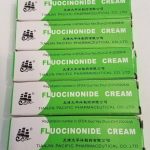
How Long Do Thrombosed External Hemorrhoids Last?
Thrombosed external hemorrhoids may go away within a few weeks. They develop under the skin around the anus and cause discomfort due to a blood clot in the vein. The pain may improve within 7-10 days without surgery and disappear within 2-3 weeks.
- Initial days of a thrombosed external hemorrhoid are painful with an associated anal lump.
- After a few days, the pressure of the blood clot on the skin will lead to splitting and bloody drainage of the lump. This may be alarming but should be self-limited. It is also associated with a decrease in the lump and improvement in symptoms.
- If the blood clot does not result in spontaneous drainage during the first several days, then the body will reabsorb it within a few days.
Although the blood clot may be reabsorbed in a few days to a couple of weeks, complications may occur if it is not fully reabsorbed. Quick treatment is necessary to prevent loss of blood supply and damage to the surrounding tissue.
What are the types of hemorrhoids?
Hemorrhoids, commonly called piles, are swollen veins around the anus or lower rectum. They are common in both men and women. It is estimated that one in 20 Americans have hemorrhoids. They occur more commonly with age, and around 50% of Americans over 50 years of age are affected.
Hemorrhoids may be felt as tiny lumps in and around the anus. They may often get better on their own within a few days, but some may need medications and even surgery to go away. Hemorrhoids are of two main types:
- External hemorrhoids: They form under the skin around the anus.
- Internal hemorrhoids: They form in the lining of the anus and lower rectum.
What causes external thrombosed hemorrhoids?
Hemorrhoids occur when there is a lot of pressure on the veins around the anus.
Generally, hemorrhoids occur when there is a lot of pressure on the veins around the anus. This raised pressure may happen because of straining during bowel movements, chronic constipation or diarrhea, and sitting on the toilet for long periods.
External thrombosed hemorrhoids may develop from increased pressure in the lower rectum. As an individual ages, the risk of external thrombosed hemorrhoids increases because the tissues that support the veins in the rectum and anus can weaken and stretch. Other causes may include severe injury near the anal area, anal intercourse, regular heavy lifting, being pregnant, being obese, and eating a low-fiber diet.
QUESTION
What are symptoms of thrombosed external hemorrhoids?
Hemorrhoids are swollen veins in the lower area of the anus/rectum. Hemorrhoids can occur inside the lining of the anus or rectum (internal hemorrhoids), or one may form at the anal opening (external hemorrhoids).
Generally, hemorrhoids may cause itching in and around the anus, hard, tender lumps felt at the bottom (anus), anal pain (especially while sitting), bleeding from the rectum (bright red blood in the stool, on toilet paper, or in the toilet bowl after a bowel movement), and a bulging or swelling may be felt through the anus in case of a prolapsed hemorrhoid.
A thrombosed hemorrhoid occurs when blood clots become trapped inside a hemorrhoid. It is a common complication of hemorrhoids.
Generally, external thrombosed hemorrhoids look like dark bluish lumps. The color is due to a blood clot inside a blood vessel. Symptoms that accompany a thrombosed hemorrhoid are often more severe than normal and may include intense itching, burning, severe pain, redness, and swelling.
How are thrombosed external hemorrhoids treated?
Symptoms of hemorrhoids may resolve with diet and lifestyle modifications. Seek immediate medical care if your symptoms do not go away in a week or if you experience severe anal pain and bleeding from the rectum, discomfort or pain in the abdomen, diarrhea, or fever. If home management for piles does not help, seek medical help.
Doctors may recommend one of the following medical procedures for treatment. These procedures include cutting off the blood supply to a hemorrhoid, which makes it shrink and go away. The procedures include rubber band ligation, sclerotherapy, infrared photocoagulation, electrocoagulation, hemorrhoidectomy, and hemorrhoid stapling.
For thrombosed external hemorrhoids, if the blood clot has formed within the past 48-72 hours, the doctor may remove it from within the hemorrhoid. This is a simple procedure that may relieve pain. Patients may be under local anesthesia during the procedure. The doctor makes a small incision in the skin and removes the blood clot. Stitches are generally not needed. If more than 72 hours have passed, the doctor may suggest home treatments.
- In the first 24 hours, applying an ice pack to the area can help limit the size of the clotted blood and associated discomfort.
- After 24 hours, gentle warmth may be applied to the area to aid the body in its efforts to disintegrate the clot and resolve the lump.
- Use a stool softener or gentle laxatives to avoid constipation. Warm baths, ointments, suppositories, and witch hazel compresses may be helpful.
- Over-the-counter topical medications can bring temporary relief from symptoms. These products include creams and ointments.
- The doctor may also prescribe additional steroid foams and suppositories.
- Persistent bleeding or painful hemorrhoids may require banding, ligation, or removal. Surgery to remove hemorrhoids may be done if other treatments don’t work.
- Adding fiber to your meals and drinking more water may help in faster healing.
What is the outlook of thrombosed external hemorrhoids?
Thrombosed hemorrhoids may most likely get better after a couple of days and resolve on their own. Seek treatment if they do not seem to be resolving. Although it is a very painful condition, it is not serious and resolves without specific treatment over several days to a week or two. No further special evaluation or treatment is needed.
Rarely, if the hemorrhoid is very large, the doctor may remove some of the clot under local anesthesia. Unfortunately, there is no permanent cure for hemorrhoids, but there are several treatments that can manage them.
Rarely, if the hemorrhoid is very large, the doctor may remove some of the clot under local anesthesia. Unfortunately, there is no permanent cure for hemorrhoids, but there are several treatments that can manage them.


